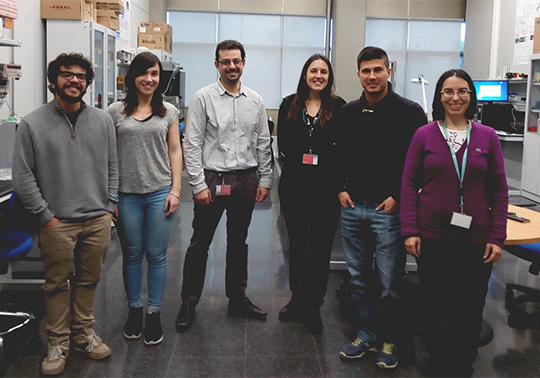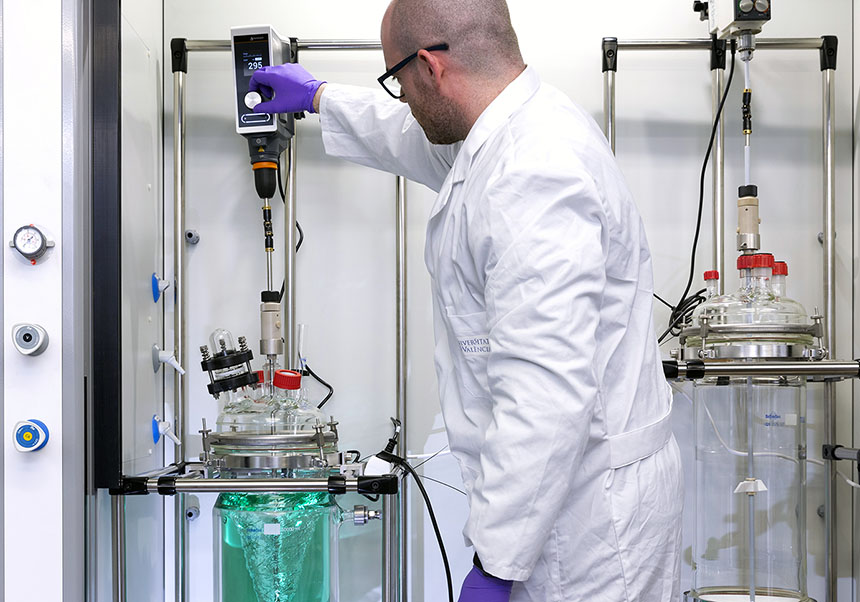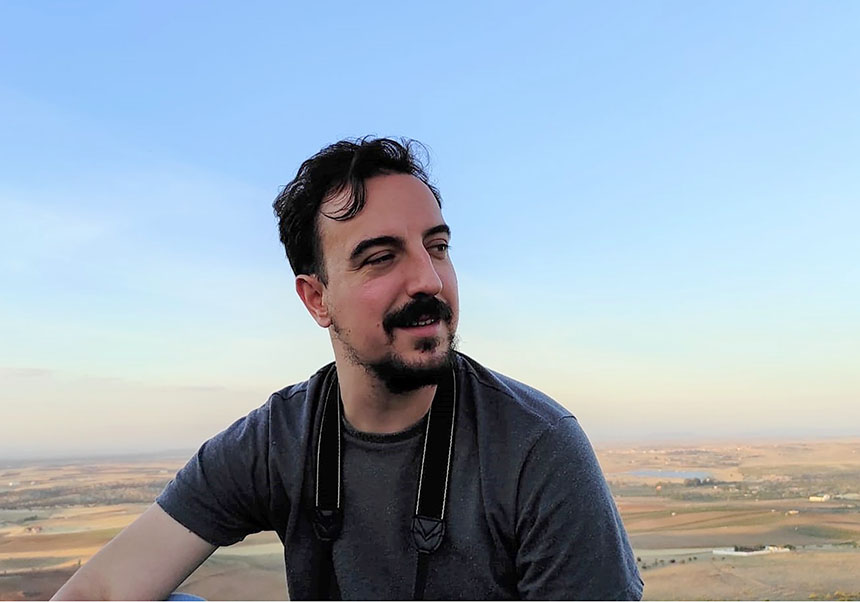New system to monitoring heavy particle cancer therapy in real time
- January 26th, 2017

The IRIS research group (IFIMED-IFIC) has just published, in the Frontiers in Oncology and Physics in Medicine journals, results indicating the legitimacy of a new Compton telescope Hadron Therapy. The new system intend to determine in an effective way the place where radiation is deposited in this type of therapy against tumours, a decisive aspect in its clinical application.
One of the critic factors to take advantage of the benefits of the called Handron Therapy against cancer is to know exactly where the energy of the heavy particle is deposited. Currently, several techniques are being developed in order to verify it while the patient is being assisted. The IRIS research group of the new facility in Medical Physics (IFIMED) of the Institute of Corpuscular Physics (IFIC, CSIC-UV), is working in a camera with motion detections similar to the ones used to detect the particles produced by The Large Hadron Collider (LHC) of CERN, but adapted to the clinical setting. It is a three layers Compton telescope, a system capable of determining where the heavy particles release the energy in the patient in an effective way. The first results published indicate the viability of this new technique.
Unlike the conventional radiotherapy, the Hadron Therapy uses charged heavy particles to irradiate the tumour. This particles, mostly protons, release almost all the energy during its travel through matter, what it is known as the “Bragg peak”. The idea of using this particles against cancer is to make coincide that peak with the place where the tumour is situated, thus in doing so lower doses are deposited in the healthy tissue. Furthermore, heavy particles destroy the tumour with more effectivity than photons.
However, it is difficult to determine that, indeed, they release this energy where the tumour is: while in conventional radiotherapy photons leaving the body to determine the process (affecting other tissues) are detected, in Hadron Therapy the type of heavy particle interaction with the tumour does not allow an easy detection.
The fifty centres dispensing this therapy all over the world utilizes the PET scan (positron emission tomography) to monitoring the therapy. The PET detects the photons generated when annihilating the electron antiparticles, produced during the irradiation, with the electrons of the tissue. However, this method has limitations: besides the low efficiency of the system (few protons are generated), this kind of monitoring is usually made some time after the irradiation (in which changes in the body are produced) and is difficult to integrate the devices in the Hadron Therapy rooms that require larger and more expensive particles accelerators to emit the beam with the wanted energy.
“One alternative is to use gamma radiation which produces the interaction, richer and more immediate”, explains Gabriela Llosá, researcher of the ISIS group (Image Reconstruction, Instrumentation and Simulations for medical applications) in IFIC-IFIMED. It is beginning to be tested in Hadron Therapy centres with the so-called “collimated cameras”, a system that offers a simple, one-dimensional image of what happens during Hadron Therapy in the patient's body. The IFIMED team develops an alternative system: a Compton telescope, a camera formed by three layers of lanthanum bromide (LaBr3) which “tinkles” when contacting with the gamma particles.
“This system determines in a more effective way where the radiation is deposited in Hadron Therapy”, Llosá claims. The advantages of the system against the collimated cameras is that the gamma radiation is better exploited in the interaction, thus offering more information about the release of energy in the tissue. The detection principle is similar to that used by the large detectors that reconstruct what happens in the particle collisions of CERN's Large Hadron Collider (LHC), where IFIC has extensive experience in both the construction and operation of several of their experiments.
Nevertheless, to apply this principle of basic research to clinic is complex: “it is necessary to develop a small device which can be situated in the Hadron Therapy room when the treatment is being carried out”, says Llosá. In order to improve the efficiency of the device, related with the proposal that the IDEA Award received in 2011, the team led by Gabriela Llosá and Josep Oliver has included a third layers in the camera, whose firsts images were published in the Frontiers in Oncology journal.
Furthermore, the system, called MACACO, has been tested for the first time with proton beams in the AGOR cyclotron of the KVI-Center for Advanced Radiation Technology of the University of Groningen (Netherlands). The results were published in Physics in Medicine and Biology. For Llosá, these evidences demonstrate the viability of the method. Nevertheless, a greater effort is required to reach the necessary precision for its clinical application and to finance its development.
More information:
First Images of a Three-Layer Compton Telescope Prototype for Treatment Monitoring in Hadron Therapy, Gabriela Llosá, Marco Trovato, John Barrio, Ane Etxebeste, Enrique Muñoz, Carlos Lacasta, Josep F. Oliver, Magdalena Rafecas, Carles Solaz and Paola Solevi. Front. Oncol.,
http://dx.doi.org/10.3389/fonc.2016.00014
Performance of MACACO Compton telescope for ion-beam therapy monitoring: first test with proton beams, Paola Solevi, Enrique Muñoz, Carles Solaz, Marco Trovato, Peter Dendooven, John E Gillam, Carlos Lacasta, Josep F Oliver, Magdalena Rafecas, Irene Torres-Espallardo and Gabriela Llosá. 2016 Phys. Med. Biol. 61 5149
http://iopscience.iop.org/0031-9155/61/14/5149















